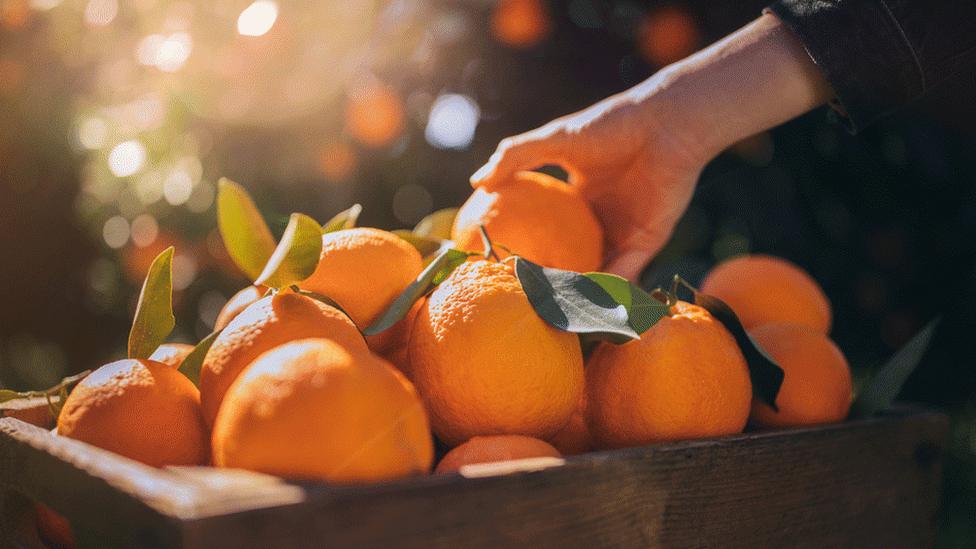Mobile app 'finds anti-cancer molecules in food'
- Published

The app works while people sleep
An app that harnesses the unused processing power of idling mobile phones has been used to identify anti-cancer molecules in a range of foods.
The research identified carrots, celery and oranges as having the highest number of cancer-fighting molecules.
The DreamLab app, which has now been downloaded 83,000 times, works while users sleep and has so far performed more than 10 million calculations.
One expert said there was a "long road ahead" to develop treatments.
The app uses an algorithm to measure the properties of more than 8,000 everyday foods against a comprehensive database, looking for molecules that have successfully tackled cancer in lab tests of cell cultures or animals.
Grapes, dill and cabbage also had high numbers of these anti-cancer molecules.

Oranges are not the only fruit offering anti-cancer molecules, according to the study
The research also suggests existing anti-diabetic and anti-microbial drugs could play a role in anti-cancer therapy.
Lead researcher Dr Kirill Veselkov, from Imperial College London's department of surgery and cancer, said: "This is a groundbreaking moment for us.
"The next step is to use AI technologies to explore the impact that different combinations of drugs and food-based molecules could have on individuals."
Weilin Wu, Cancer Research UK's health information officer, said: "This intriguing study suggests we might be able to find leads for new cancer therapies among the naturally occurring chemicals that make up our food and drink.
"But even if this approach bears fruit, there's a long road ahead to develop them into cancer treatments and test whether they're effective in treating the disease.
"Your overall diet is much more important for reducing cancer risk than eating a particular type of food.
"There's good evidence that you can reduce your cancer risk by eating more foods high in fibre, like fruit and veg, and cutting down on processed and red meat, and high calorie foods and drink."
The app is a partnership between Imperial College London and the Vodafone Foundation. The findings have been published in Nature.
- Published1 May 2018
